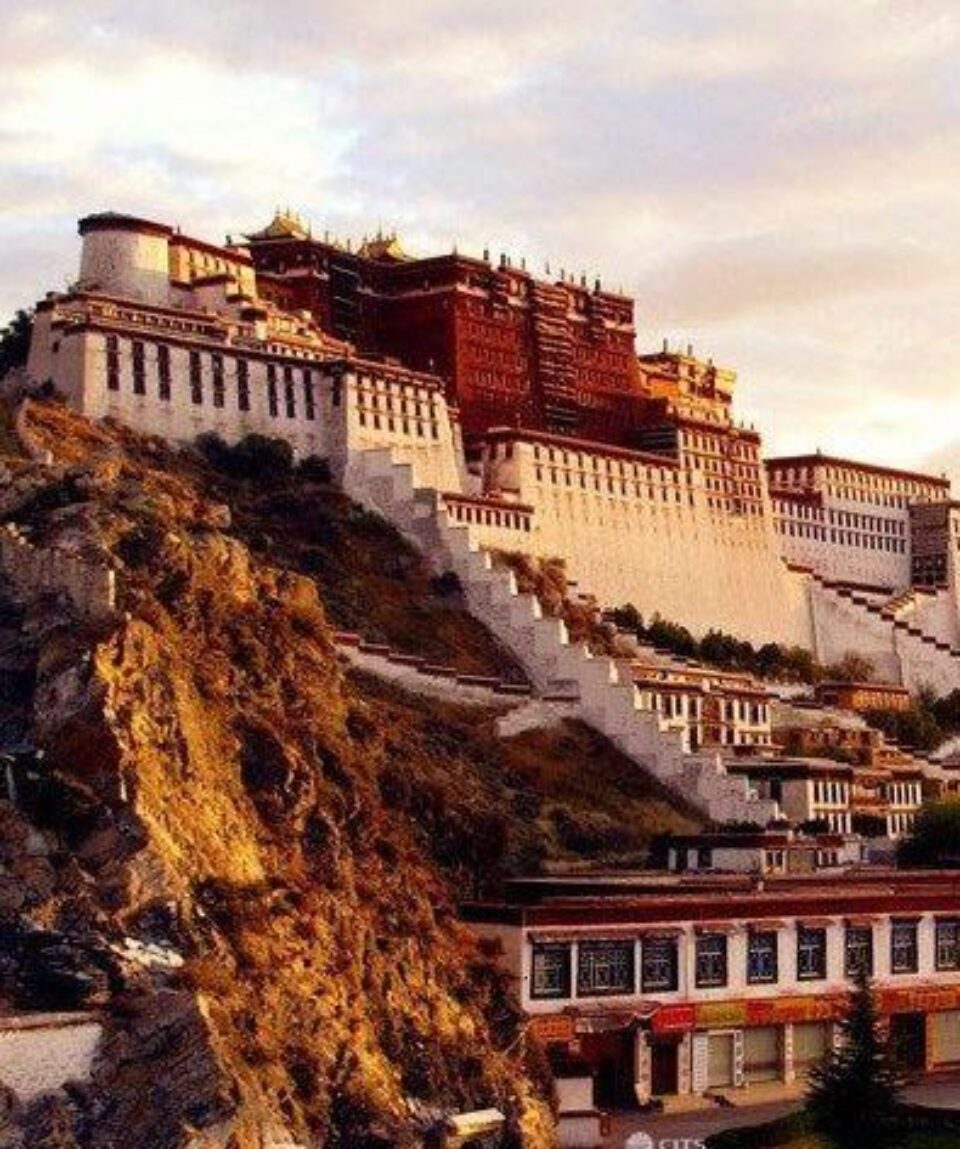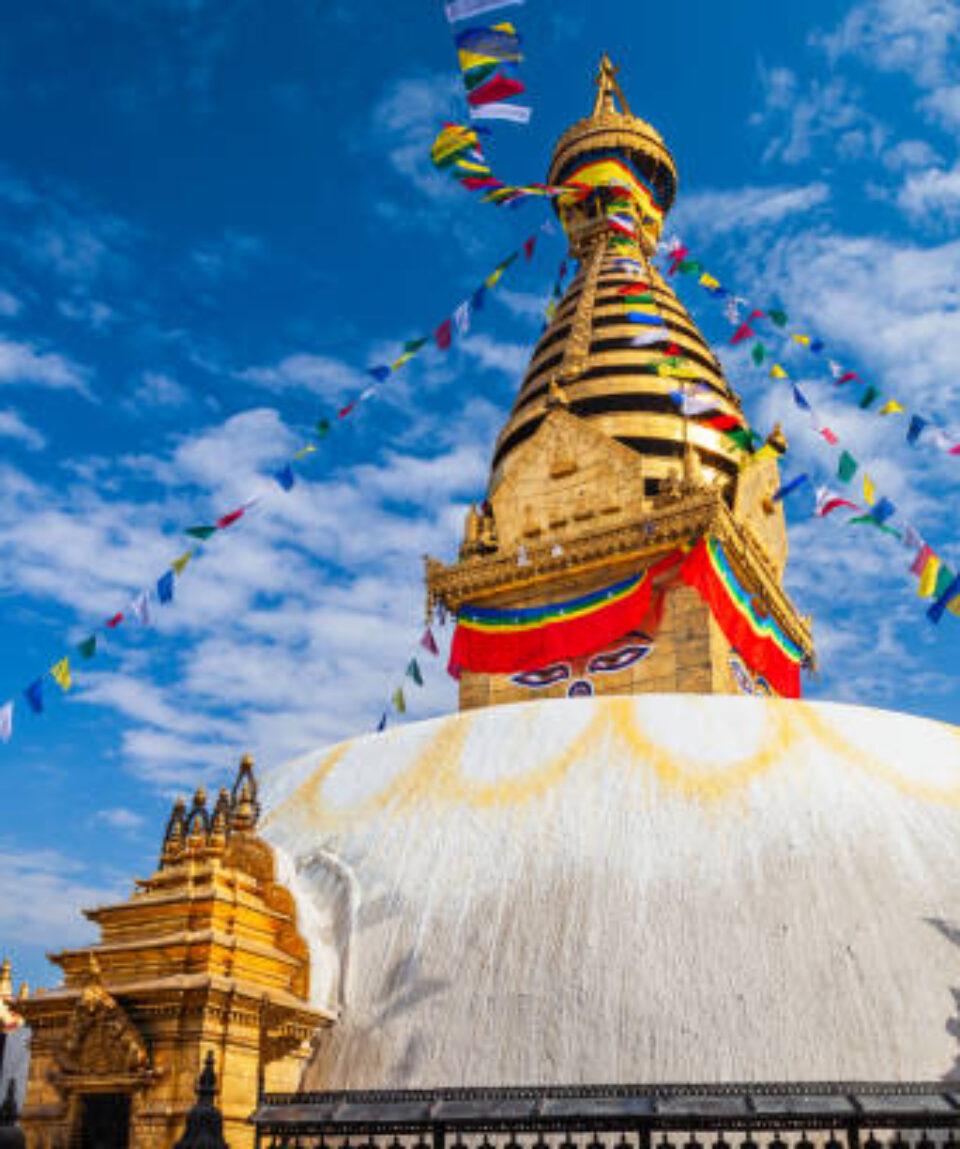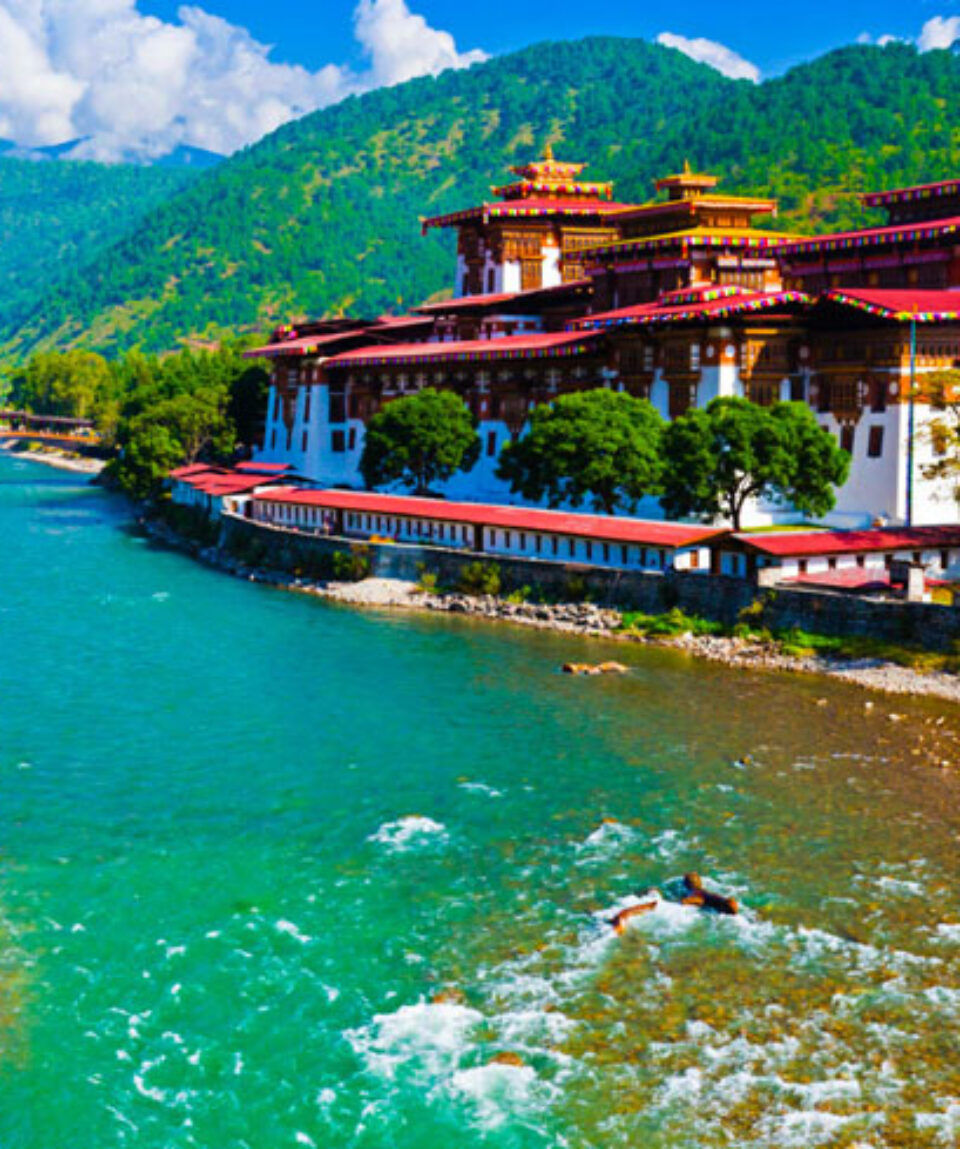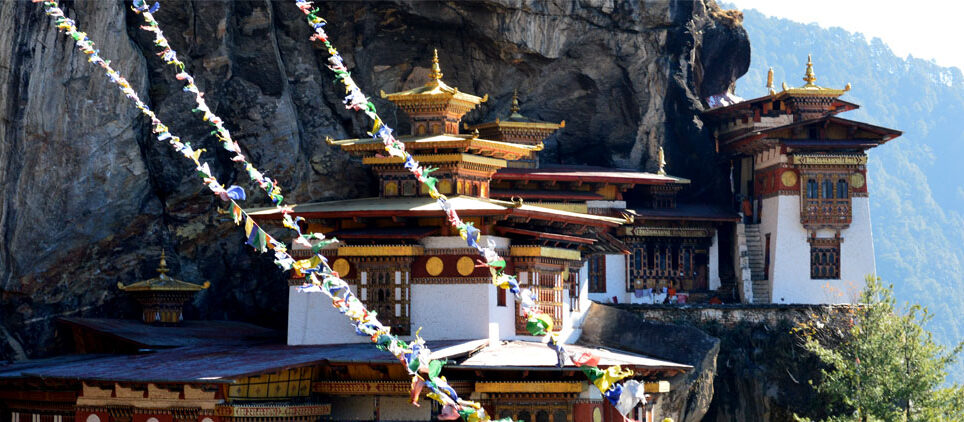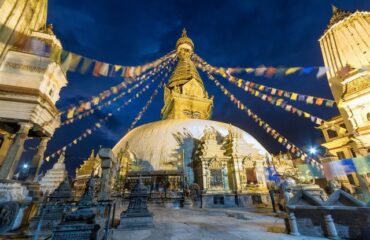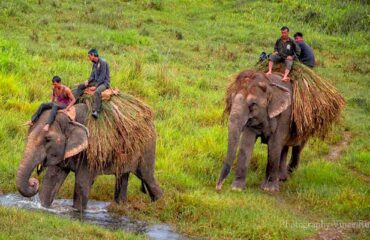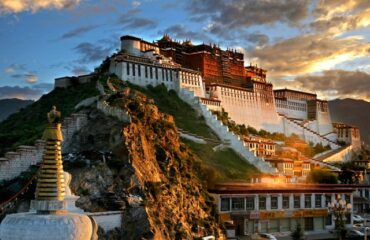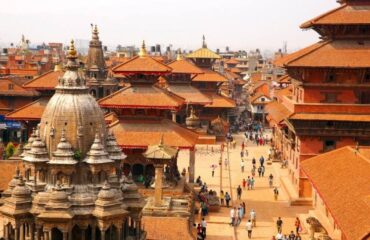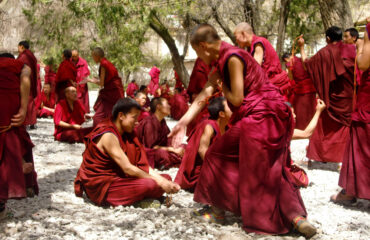Nepal, Tibet and Bhutan Tour
fromCultural discovery of three Himalayan nations through cultural tours, short hikes, jungle safari, and sunrise views in one visit.
-
Reviews 0 Reviews0/5
-
Vacation Style Holiday Type
-
Culture
-
World
-
-
Activity Level Leisurely
-
Group Size Medium Group
Bhutan, Nepal, and Tibet Tour cover the three most beautiful Himalayan nations of South Asia: through the last Shangri-La-Bhutan, the land of Mt. Everest; the birthplace of Buddha—Nepal; and lastly, the roof of the world—Tibet. With our combo tour, you will have the best opportunities to explore three culturally reach countries in your single travel. Our tour begins with exploring the unique and untouched wonders of Bhutan, which is cradled within the deep folds of the Himalayas, presenting a vibrant culture captivating many, snow-capped mountains, emerald green landscapes, fascinating wildlife, and gentle hospitality of the Bhutanese people all await you.
Next, travel to Nepal with a flight to Kathmandu for an amazing time. Begin your tour with visits to three UNESCO World Heritage Sites in Kathmandu followed by a jungle safari in Chitwan and sightseeing in the amazing lake city, Pokhara. Next, after a breathtaking flight over the Himalayas, we arrive at the incomparable “Roof of the World”, Tibet. For culture lovers, you’ll witness displays of people so optimistic and proud of their religion and beliefs, remaining much the same as they have since centuries ago. While there, also visit a number of impressive
- Airport transfers and escorts in Nepal, Bhutan, and Tibet.
- All meals during the tour. (breakfast, lunch, dinner, tea, and coffee)
- Accommodation while on the tour
- Domestic airfares and transportation as itinerary
- English speaking government-licensed guides
- Entry permits and fees for all temples, parks, monasteries, and cultural and historical sites.
- Bhutan and Tibet visa fees and processing assistance (Please e-mail us your color scan copy of passport)
- Staff cost including their (wages, insurance, food, and accommodation)
- 4 nights accommodation at 3-star category hotel in Kathmandu on twin sharing basis with breakfast.
- Tibetan standard accommodation in Lhasa with breakfast on twin sharing basis
- Standard accommodation in Bhutan with breakfast on twin sharing basis
- All guided sightseeing tours in Nepal, Tibet & Bhutan and entry fees.
- All ground transportation on comfortable private vehicle
- All government and local taxes
- International airfares
- International Airport Departure Tax and visa entry fees
- Personal Equipment
- Any type of personal expenses, such as alcoholic beverages and drinks, phone, and laundry.
- Rescue & travel insurance, trip cancellation costs, accident or health emergency, evacuation, loss, theft or damage to baggage, and personal effects.
- Tips & Gratuities to local staffs
- We strongly advise you to take out personal travel insurance.
- Day 1 Depart Home Country
- Day 2 En Route (Transit)
- Day 3 Arrival and sightseeing in Paro (2,250m/7,382ft)
- Day 4 Paro to Thimphu, hike to Taktsang Monastery (3,120m/10,237ft) 4-5 hrs
- Day 5 Thimphu to Punakha (1,250m/4,101ft)
- Day 6 Punakha to Paro (2,250m/7,382ft)
- Day 7 Fly to Kathmandu, sightseeing in Kathmandu (1,350m/4,429ft)
- Day 8 Drive from Kathmandu to (Chitwan 415m/1,362ft)
- Day 9 Chitwan National Park (415m/1,362ft)
- Day 10 Drive to Pokhara (827m/2,713ft)
- Day 11 Catch the morning sunrise from Sarangkot Hill then fly to Kathmandu (1,600m/5,250ft)
- Day 12 Arrival in Lhasa (3,650m/11,976ft)
- Day 13 Sightseeing in Lhasa: Potala Palace, Norbulingka Palace and Tibet Traditional Hospital (3,700m/12,140ft)
- Day 14 Sightseeing in Lhasa: Sera Monastery, Drepung Monastery, Jokhang Temple and Barkhor Bazaar (4,100m/13,452ft)
- Day 15 A day excursion to Ganden Monastery and Drayerpa Cave 4,300m/14,108ft
- Day 16 Final departure
- Day 17 En Route Home
- Day 18 Arrive Home Country
All you need to bring for this Tour is simply some comfortable clothes; there is no any requirement of special equipment on the tour. However for your ease, the following gives you the general idea about the personal items you need to manage for the trip. The personal items referred here are optional and depends upon your choice. The most important factor to be considered while choosing the equipments and your Bag-pack, is the time of the year you are travelling.
In a tour, the vehicle transfers all the heavy items and equipments. But the Personal belongings of the clients which is required at any moment like money, water bottle, camera, suns cream and toilet paper etc. should be carried by yourself. It is therefore advisable that you pack the personal belongings into your daypack.
A Note on Packing
For your international flights, we recommend that you pack all your equipment in your two duffle bags or suitcase. Do not simply pack your backpack (since the straps can be damaged by the baggage handling machines). It is important to lock these bags for their trip. Depending on the airport, you may be able to put your travel locks on after TSA has searched the bags. If not, Lock the bags with Zip Ties. If the TSA cuts off the zip-tie to search your bag, they will replace it. You will still need the travel locks to lock your bags in the hotel and during the tour .
- Duffel or Rucksack bag or suitcase
- Daypack
- Warm wool or synthetic hat that cover your ears (only if you are travelling in the cold season i.e January, February and December)
- Goggles or sunglasses for sunbeam, dust and wind.
- A neck warmer is another piece of gear for extra warmth if you feel you will need it and is for cold season i.e January, February and December.(optional)
- 1 pair warm gloves (This is required if your are travelling in cold season i.e January, February and December).
- T-shirts (2).
- Waterproof (preferably breathable fabric) shell jacket (preferable if you are travelling in rainy season from June to September.)
- 1 pair cotton pants (loose jeans/khakis), 1 pair shorts.
- 2 pairs lightweight long underwear/thermals (if you are traveling in winter January, February and December).
- 2 pairs of liner socks, synthetic or capilene.
- 1 pair light camping shoes or sneakers..
- 1 pair sandals (Optional).
Medicines and First Aid Kits
- Extra Strength Excedrin for altitude-related headaches.
- Ibuprofen for general aches and pains.
- Immodium or Pepto Bismol capsules for upset stomach or diarrhea.
- 1 small personal sized first-aid kit with blister treatments such as mole skin, band-aids, some waterproof tape, anti-infection ointments, etc. Your guides will have more extensive medical gear, but you should have the basics for general use.
Miscellaneous, but Important !
- Passport and extra passport photos (4 copies).
- Airline ticket
- Durable wallet/pouch for travel documents, money & passport.
- Lip balm. At least SPF 20, 2 sticks. A string taped to the stick is helpful, to hang around your neck and some are now being sold with a cord already attached. Handy as it avoids you from having to stop and look for it.
- Sunscreen.
- Toiletry kit. Be sure to include hand wipes, and liquid hand sanitizer
- 2 bandanas.
This list is only a guide. While you are required to bring everything on this list, there are numerous options, brands, and versions of each piece of equipment. Use your experience and the listed features to find the best gear for you. Some of the above equipment can be easily found in stores in Kathmandu for cheaper prices.
This trip is suitable for any kind of people. No previous experience is required. Persons suffering from a pre-existing medical condition must seek medical advice before considering the trip.
The best time for Nepal, Bhutan, and Tibet tours is between February to June and September to December.
It is vital to know that Bhutan does not have a Visa on Arrival Service. Except for a few southeastern countries like India, Bangladesh, and the Maldives, tourists from all other countries need to get a visa for traveling to Bhutan. Applying for a visa for Bhutan is a relatively easier process than what people imagine. You cannot apply for a visa on your own so you need to book a trip with your international tour operator or a local travel agency to apply online on behalf of you. These tour agents should be registered with the Tourism Council of Bhutan. Certain documents particularly the electronic copy of your passport is required for processing by the tour agency. It costs about $40 for the application.
It will take about 72 working hours for the Tourism Council of Bhutan to process your visa. Your visa clearance letter will be sent to your tour operator, the airport immigration terminal, road checkpoints, and the airlines that you choose to fly from. Your visa is usually cleared about 1 to 2 weeks before your destined trip date. At the entry point in Bhutan, your visa will be stamped in your passport. Having the visa processing done through your tour operator makes it rather easier and hassle-free.
Although there are two modes of transportation in Bhutan; by Air and by Land, entering Bhutan is mostly done by air.
- By Air: There is only one international airport in Bhutan, the Paro International Airport. Also, due to the challenging landing in the airport, there are only a handful of designated pilots who can fly internationally. Druk Air or Bhutan Airlines are the national carriers and have flights from Nepal (Kathmandu), Singapore, Bangladesh (Dhaka), Thailand (Bangkok), and India.
- By Land: Three entry points connects to Bhutan by Land, southeast, and southwest. On the southeastern end, the entry point is Samdrup Jongkhar and Gelephu. These points in the state of Assam are the less-traveled route. In the southwestern end, the more popular exit point is Phuentsholing in the state of West Bengal. The option to go by land is best if you are visiting from India.
Although both places are small in size, their unique geographical locations and religious cultures are undoubtedly mysterious and attractive to tourists. Bhutan and Nepal are great places for trekking, sightseeing and leisure activities
While Bhutan and Tibet are neighbors, there is no overland crossing between the two popular destinations, and no direct flights between Paro and Lhasa. … While Tibet covers the northern border of Bhutan, the rest of the country borders with various states of India, including West Bengal and Assam


